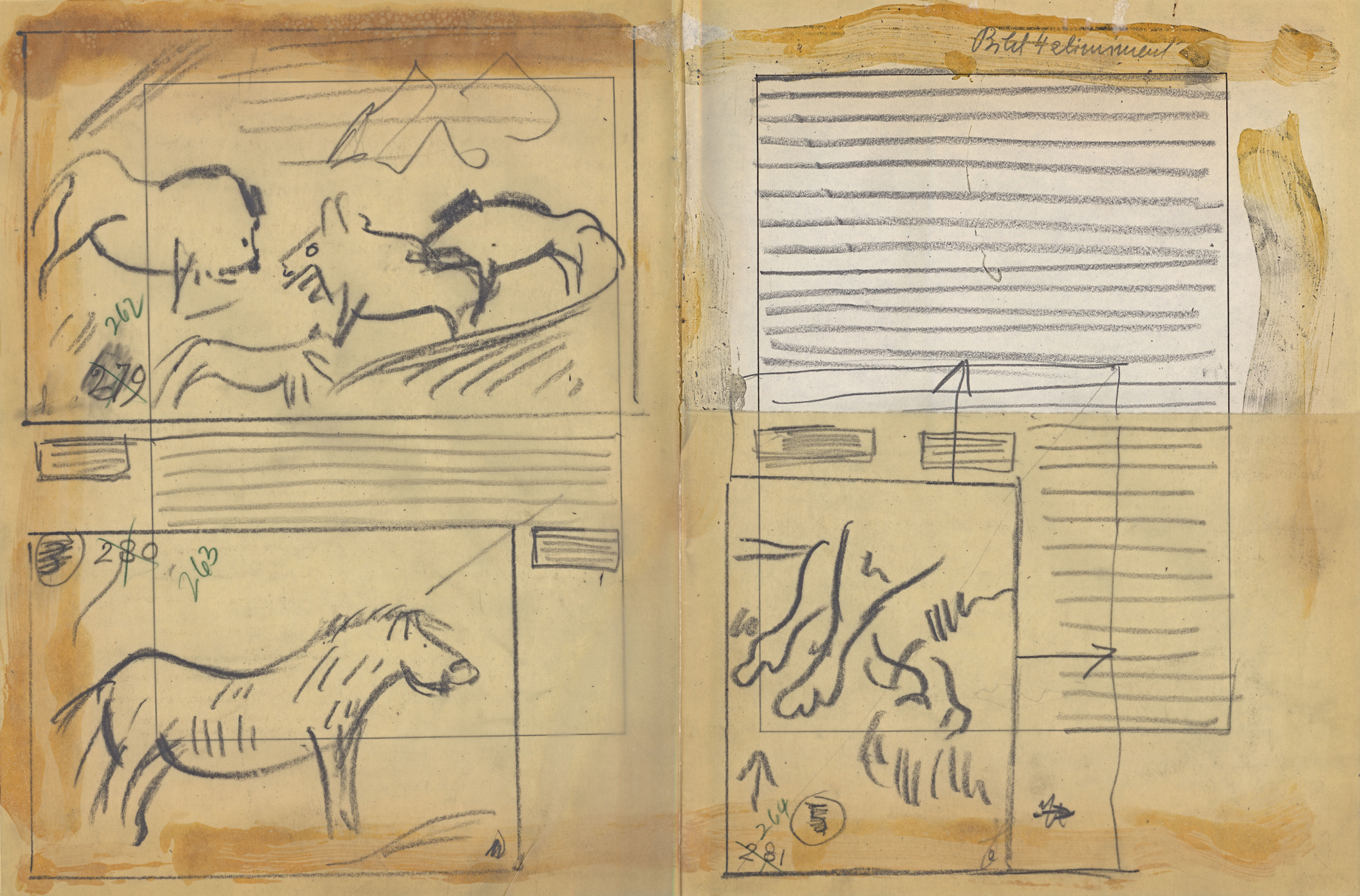Reto Geiser, “Erziehung zum Sehen” (particularly “Plastische Höhlenphotografie”) in Sigfried Giedion und die Photographie: Bildinszenierungen der Moderne, eds. Werner Oechslin and Gregor Harbusch, (Zurich: gta Verlag, 2010), 148–149.
For a more extensive account of Giedion’s correspondence with paleoarchaeologists, see Spyros Papapetros, “Modern Architecture and Prehistory: Retracing The Eternal Present (On Siegfried Giedion and André Leroi-Gourhan),” RES: Anthropology and Aesthetics 63/64 (Spring/Autumn 2013): 173–189.
André Leroi-Gourhan, review of The Eternal Present in American Anthropologist (New Series) 65:5 (1963), 1180–1181.
Sigfried Giedion, The Eternal Present: A Contribution on Constancy and Change, Vol. I: The Beginnings of Art, (Oxford: Oxford University Press, 1962), 526.
Ibid., 516.
Giedion uses the adjective “prearchitectural” instead of “prearchitectonic” to describe “prehistoric space conception” in his later book Architecture and the Phenomena of Transition (Cambridge: Harvard University Press, 1970), 2.
Giedion, The Beginnings of Art, 226–240.
Semper’s manuscripts today are stored next to Giedion’s typescripts in the gta archives housing the Nachlass of the 19th century architect as well as the 20th century architectural historian, both of whom lived and worked in Zurich.
Gottfried Semper, “Science, Industry and Art in the 1851 London Exhibition” in The Four Elements and Other Writings, trans. Harry F. Mallgrave and Wolfgang Herrmann (New York: Cambridge University Press, 1989), 143–144. For the German edition: Wissenschaft, Industrie, und Kunst (Braunschweig: Vieweg, 1852), 31–32.
Gottfried Semper, Style in the Technical and Tectonic Arts, trans. H.F. Mallgrave and M. Robinson (Los Angeles: The Getty Research Institute, 2004), 250. For the German edition: Der Stil. Bd. I: Die Textile Kunst (Frankfurt: Verlag für Kunst und Wissenschaft, 1860), 224 and 233.
Giedion, Style, 468 (translation modified) and Der Still. Bd. II. Keramik (Munich: Druckmann, 1863), 2.
Max Raphael, Prehistoric Cave Paintings, (Washington DC: Bollingen/Pantheon, 1946), 2.
